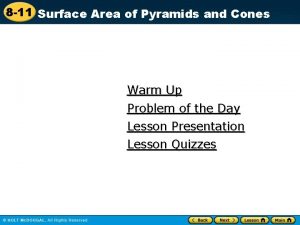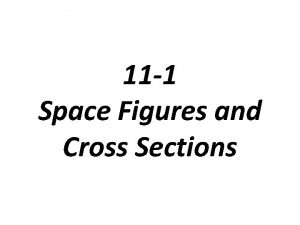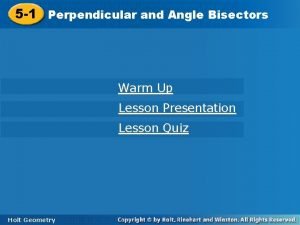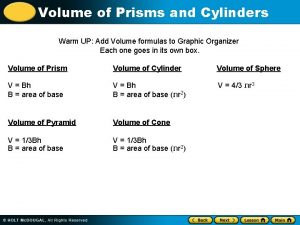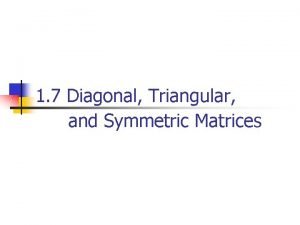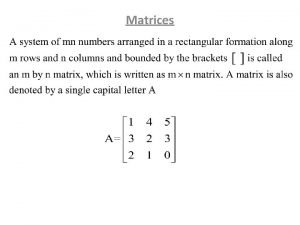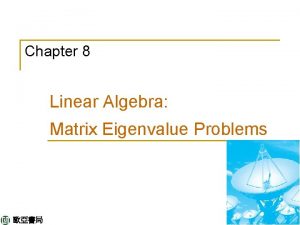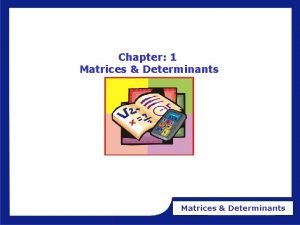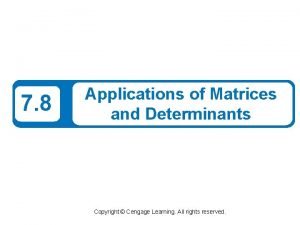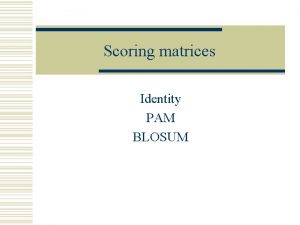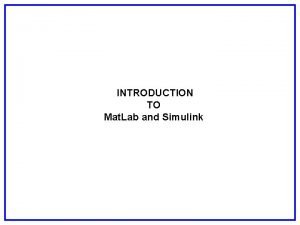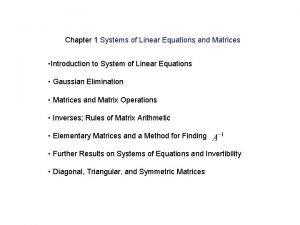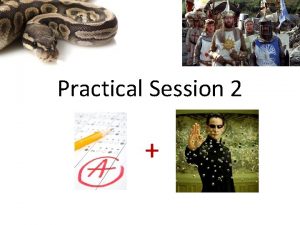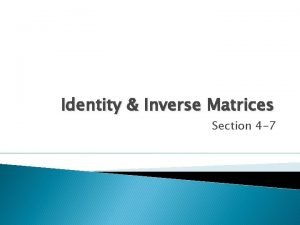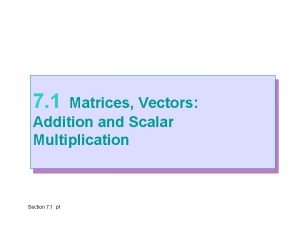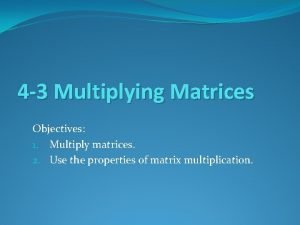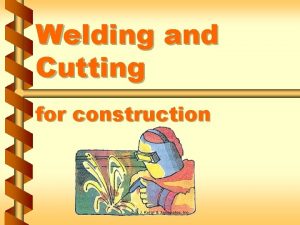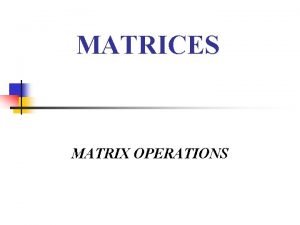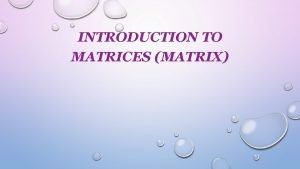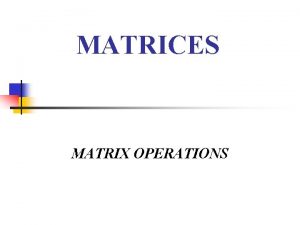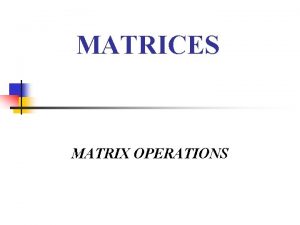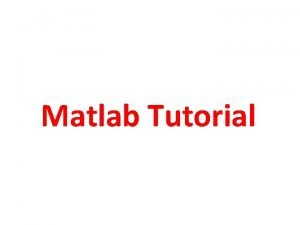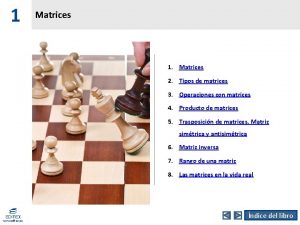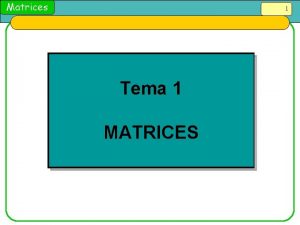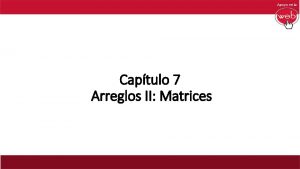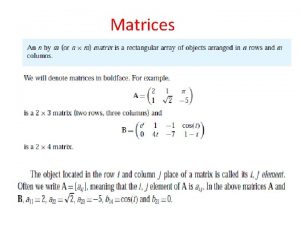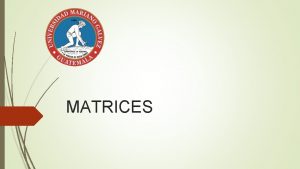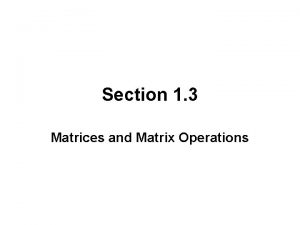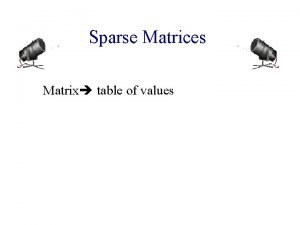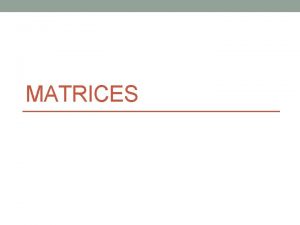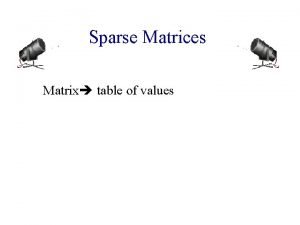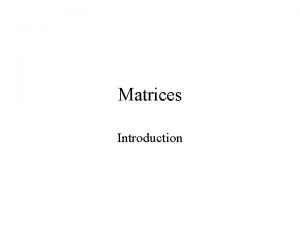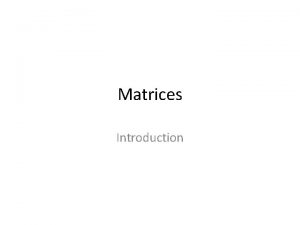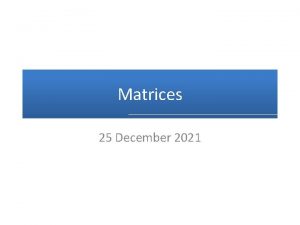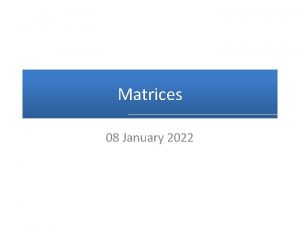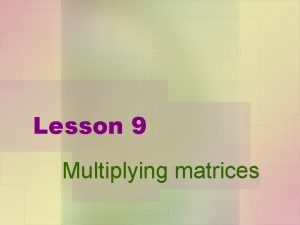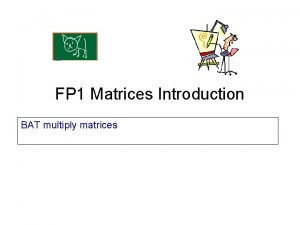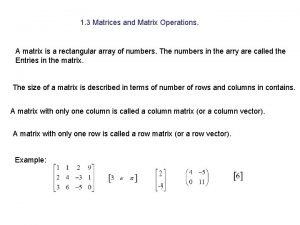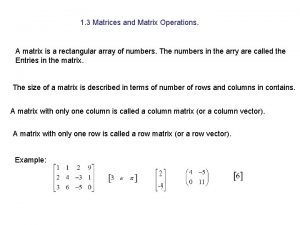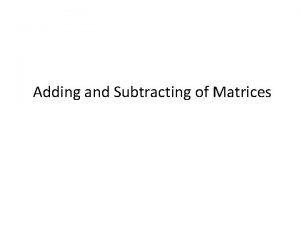Unit 39 Matrices Presentation 1 Matrix Additional and




























- Slides: 28

Unit 39 Matrices Presentation 1 Matrix Additional and Subtraction Presentation 2 Scalar Multiplication Presentation 3 Matrix Multiplication 1 Presentation 4 Matrix Multiplication 2 Presentation 5 Determinants Presentation 6 Inverse Matrices Presentation 7 Solving Equations Presentation 8 Geometrical Transformations Presentation 9 Geometric Transformations: Example

Unit 39 39. 1 Matrix Additional and Subtraction

If a matrix has m rows and n columns, we say that its dimensions are m x n. For example is a 2 ? x 2 matrix is a 2 ? x 3 matrix You can only add and subtract matrices with the same dimensions; you do this by adding and subtracting their corresponding elements.

Example 1 (a) (b) ? ? ?

Example 2 If what are the values of a, b, c and d? Solution Subtracting gives Hence ? ? ?

Unit 39 39. 2 Scalar Multiplication

For scalar multiplication, you multiply each element of the matrix by the scalar (number) so Example If then ? ? ? ?

Unit 39 39. 3 Matrix Multiplication 1

You can multiply two matrices, A and B, together and write only if the number of columns of A = number of rows of B; that is, if A has dimension m x n and B has dimension n x k, then the resulting matrix, C, has dimensions m x k. To find, C, we multiply corresponding elements of each row of A by elements of each column of B and add. The following examples show you how the calculation is done. Example If and , then A is a 2 x 2 matrix and B is a 2 x 1 matrix, so C = AB is defined and is a 2 x 1 matrix, given by: ? ?

Unit 39 39. 4 Matrix Multiplication 2

Here we show a matrix multiplication that is not commutative Consider and First we calculate AB. ? ? ? ? ? ?

Here we consider a matrix multiplication that is not commutative Consider and And now for BA. ? ? ? ? ? Is AB = BA? No Hence matrix multiplication is NOT commutative

Unit 39 39. 5 Determinants

For a 2 x 2 square matrix number defined by its determinant is the Example 1 What is det. A if ? Solution ? ? ?

For a 2 x 2 square matrix number defined by its determinant is the Example 2 If what is the value of x that would make det. M = 0 ? Solution ? ? ? ? ? ? A matrix, M, for which det. M = 0 is called a singular matrix.

Unit 39 39. 6 Inverse Matrices

For a 2 x 2 matrix, M, its inverse , is defined by where You can always find the inverse of M if it is non-singular, that is. For Example If find Solution and verify that ? ? Hence ? ? ? ? ? ?

Unit 39 39. 7 Solving Equations

You can write the simultaneous equation In the form when You can solve for X by multiplying by This gives or So we first need to find . Now ? ? ? ? and ? ? Hence ? ?

Unit 39 39. 8 Geometrical Transformations

You can use matrices to describe transformations. We write where is transformed into Lets look at the common transformations




Unit 39 39. 9 Geometric Transformations: Example

Example A triangle, XYZ, with coordinates X (4, 5), Y(-3, 2) and Z(-1, 4) is mapped onto triangle Xʹ Yʹ Zʹ by a transformation (a) Calculate the coordinates of the vertices of triangle Xʹ Yʹ Zʹ Solution ? i. e. ? ? ? i. e.

Example A triangle, XYZ, with coordinates X (4, 5), Y(-3, 2) and Z(-4, 4) is mapped onto triangle Xʹ Yʹ Zʹ by a transformation (b) A matrix maps triangle Xʹ Yʹ Zʹ onto triangle Xʹʹ Yʹʹ Zʹʹ. Determine the 2 x 2 matrix, Q, which maps triangle XYZ onto Xʹʹ Yʹʹ Zʹʹ. Solution Xʹʹ = NXʹ = NMX so Xʹʹ = QX where ? ?

Example A triangle, XYZ, with coordinates X (4, 5), Y(-3, 2) and Z(-4, 4) is mapped onto triangle Xʹ Yʹ Zʹ by a transformation (c) Show that the matrix which maps triangle Xʹʹ Yʹʹ Zʹʹ back onto XYZ is equal to Q. Solution ? ? ? ? so QXʹʹ = X and similarly QYʹʹ = Y and QZʹʹ = Z Thus Q maps Xʹʹ Yʹʹ Zʹʹ back to XYZ
 Unit 12 supporting individuals with additional needs
Unit 12 supporting individuals with additional needs Simplify matrix
Simplify matrix 10 segment circle
10 segment circle Sa of pyramid
Sa of pyramid Practice 11-1 space figures and cross sections answer key
Practice 11-1 space figures and cross sections answer key 5-1 reteach perpendicular and angle bisectors
5-1 reteach perpendicular and angle bisectors Volume of prism and cylinder worksheet
Volume of prism and cylinder worksheet Pros and cons of fptp
Pros and cons of fptp Symmetric matrix
Symmetric matrix Skew hermitian matrix example
Skew hermitian matrix example Data matrix and dissimilarity matrix
Data matrix and dissimilarity matrix Orthogonal matrix example
Orthogonal matrix example Unit 10, unit 10 review tests, unit 10 general test
Unit 10, unit 10 review tests, unit 10 general test 5cm labor
5cm labor Leopold maneuver
Leopold maneuver Matrix band and wedge
Matrix band and wedge Objectives of matrices
Objectives of matrices Applications of matrices and determinants
Applications of matrices and determinants Types of scoring matrices
Types of scoring matrices Vectors and matrices
Vectors and matrices Homogeneous system of linear equations examples
Homogeneous system of linear equations examples Graph matrices and application in software testing
Graph matrices and application in software testing Amino acid substitution matrix
Amino acid substitution matrix Identity and inverse matrices
Identity and inverse matrices Scalar multiplication matrix
Scalar multiplication matrix Determine whether each matrix product is defined
Determine whether each matrix product is defined Cengage matrices
Cengage matrices Fire watchers are additional personnel
Fire watchers are additional personnel Additional comments uc application
Additional comments uc application



